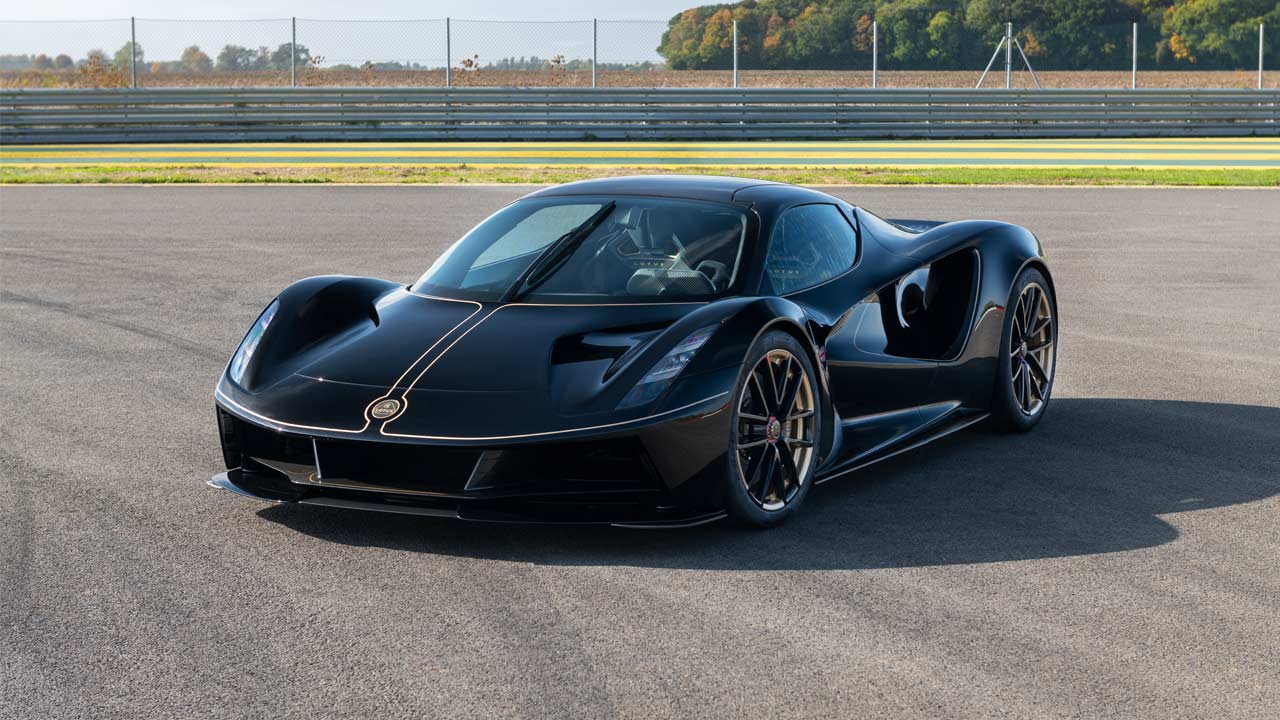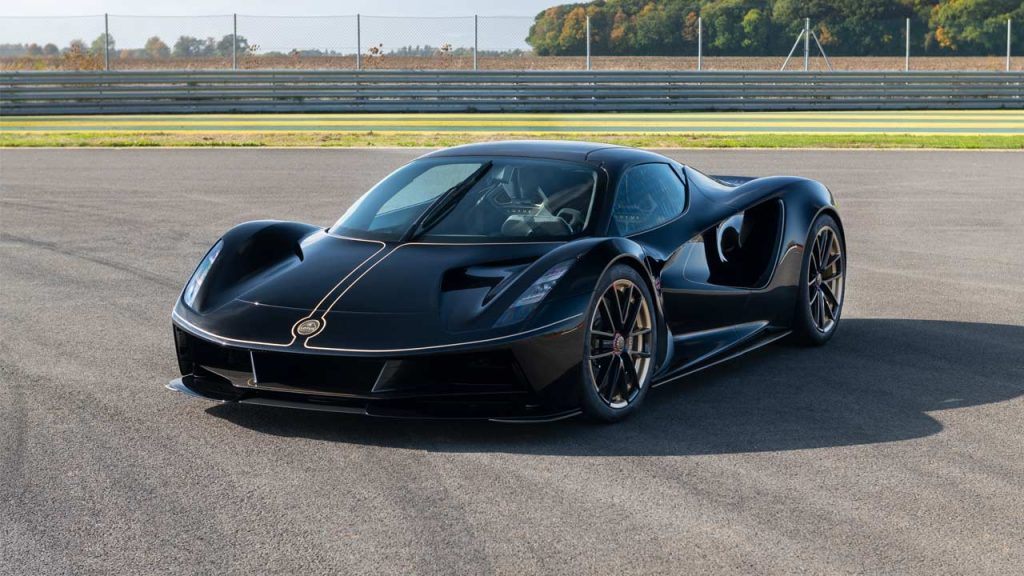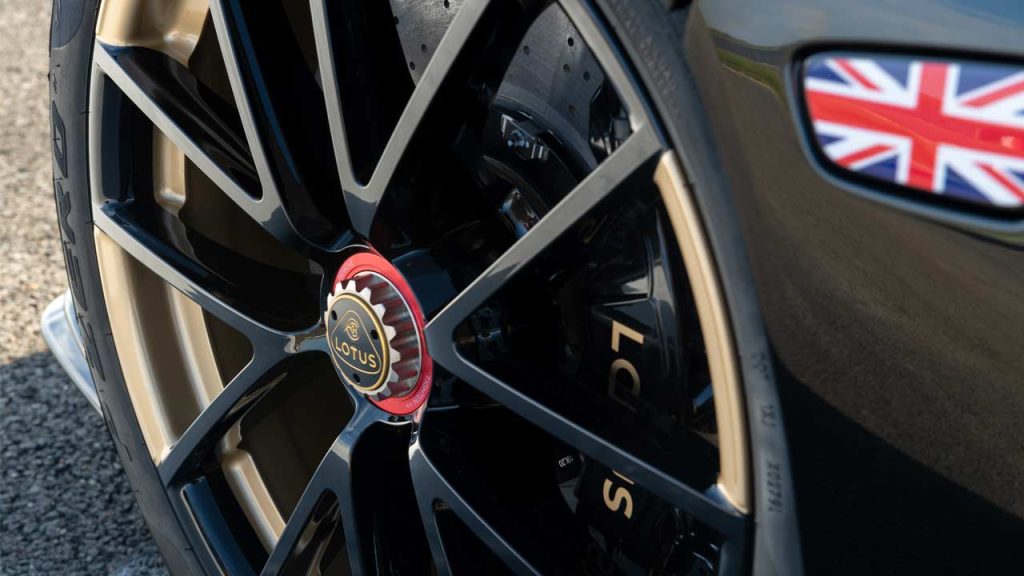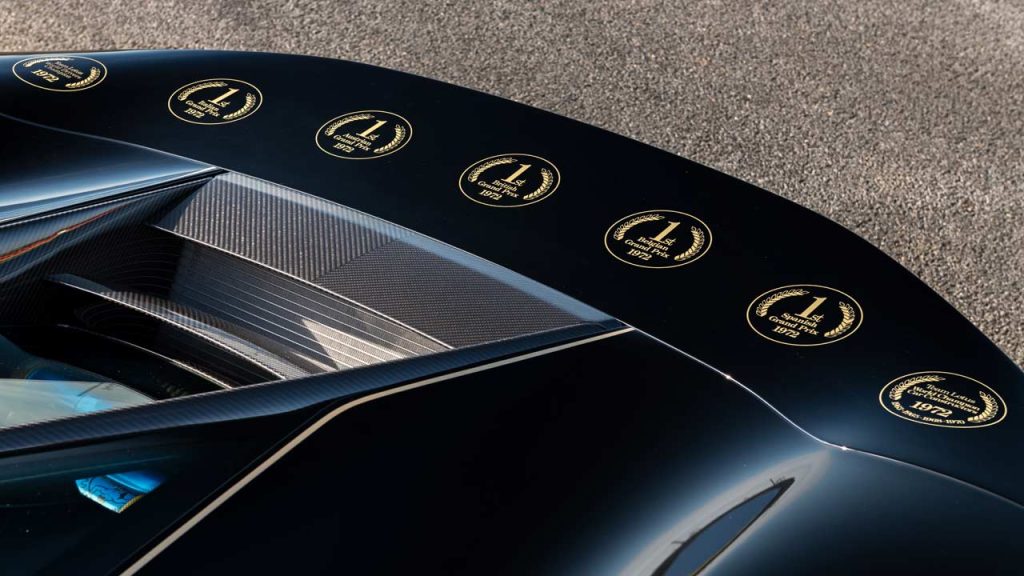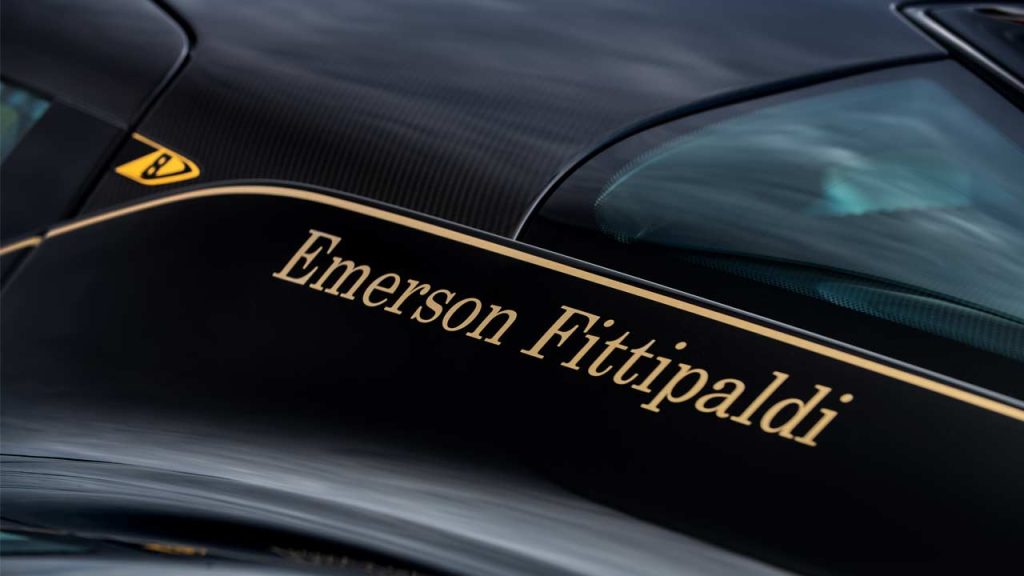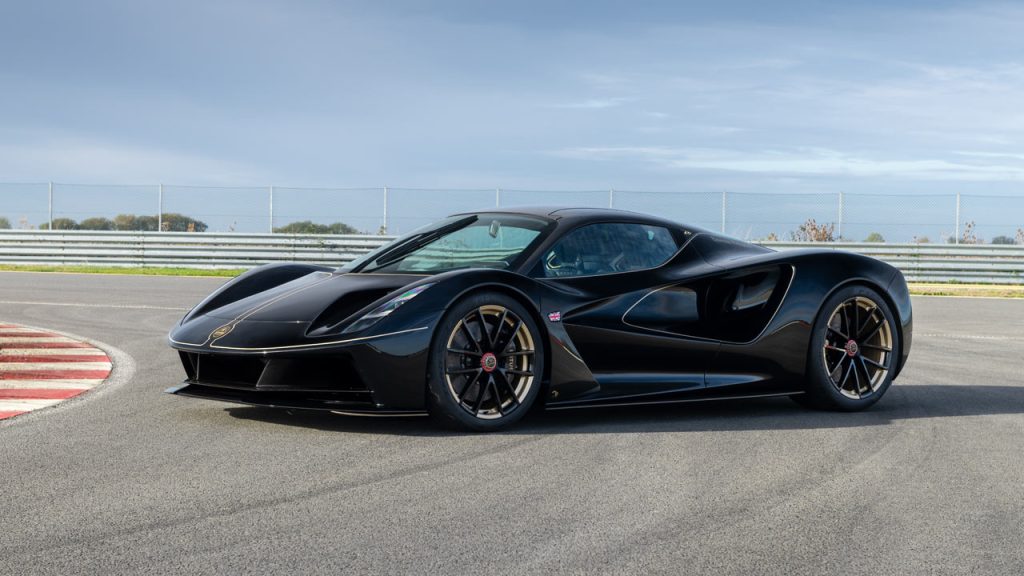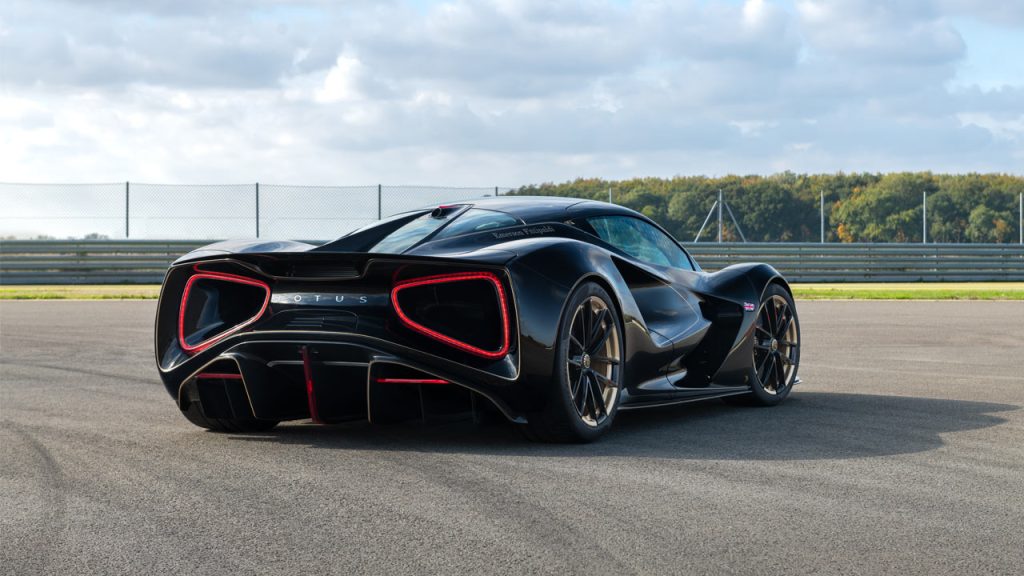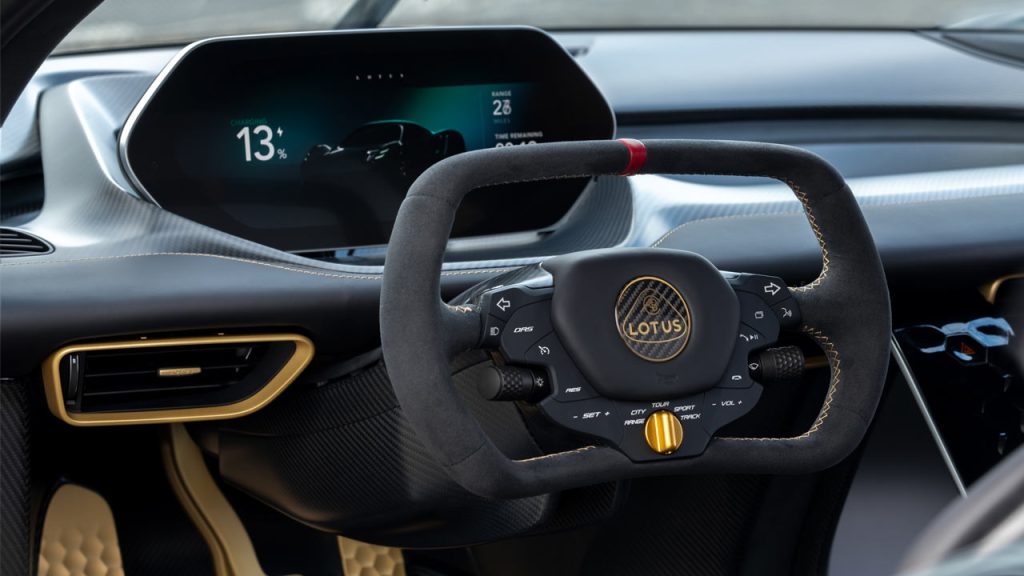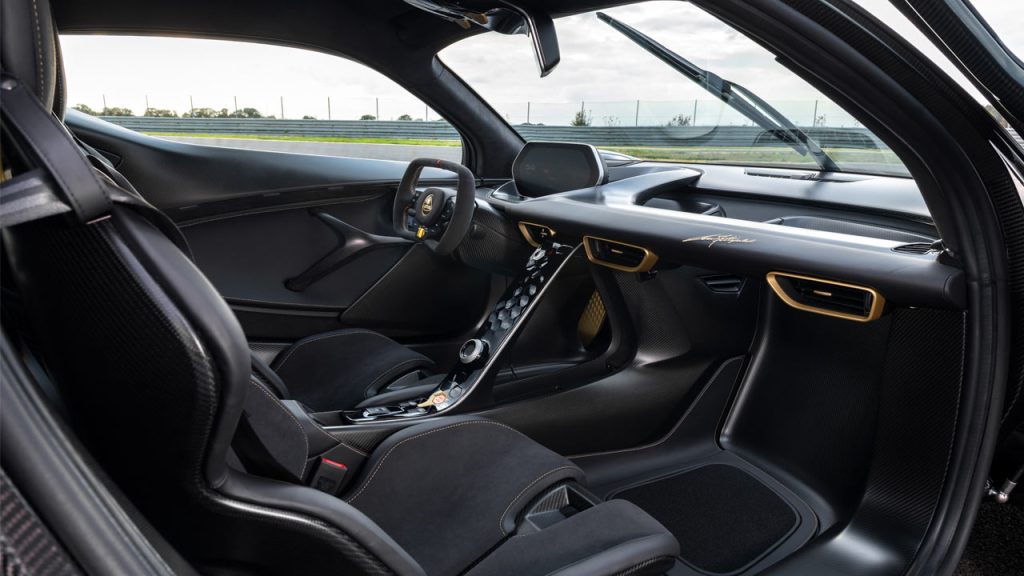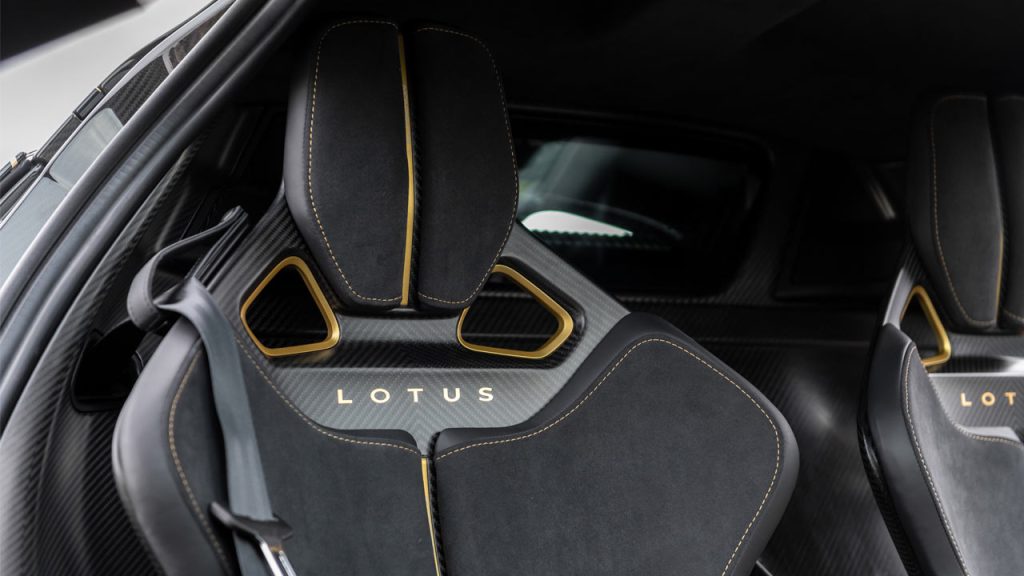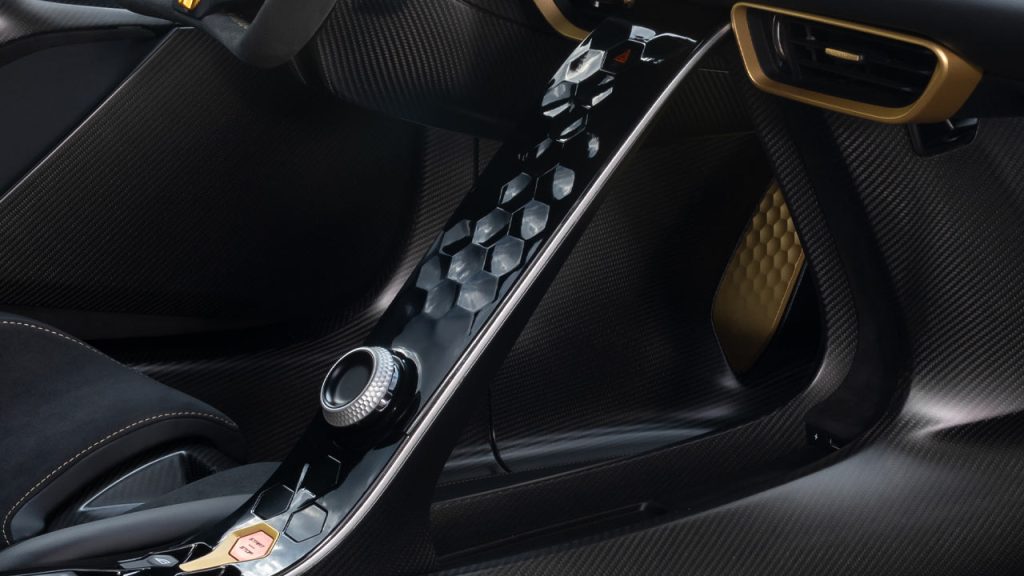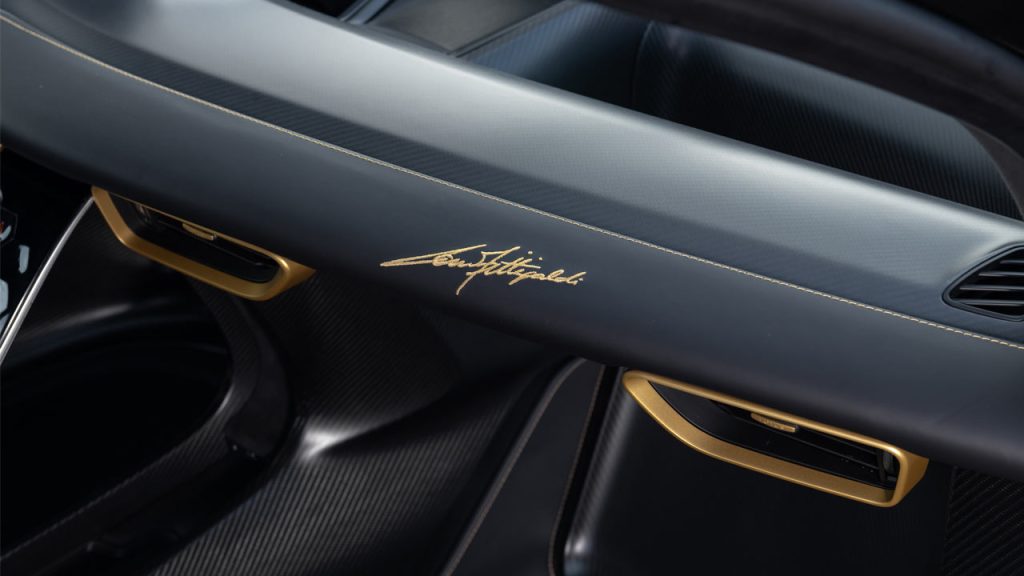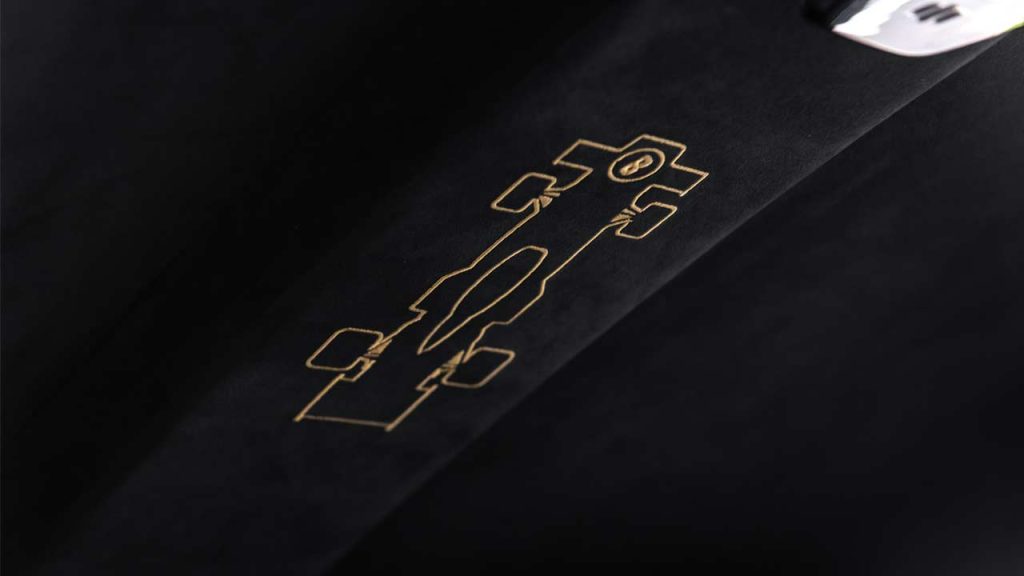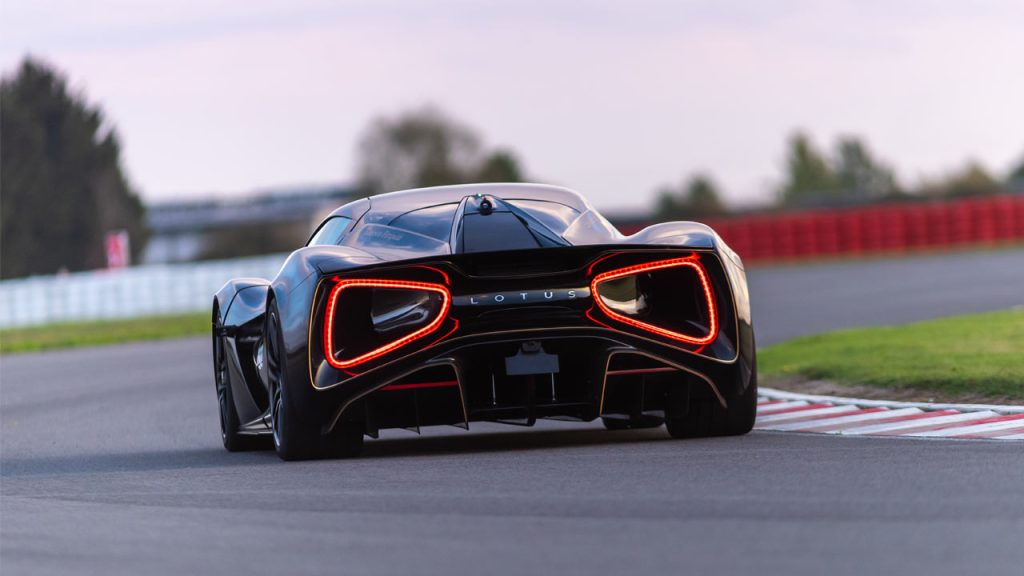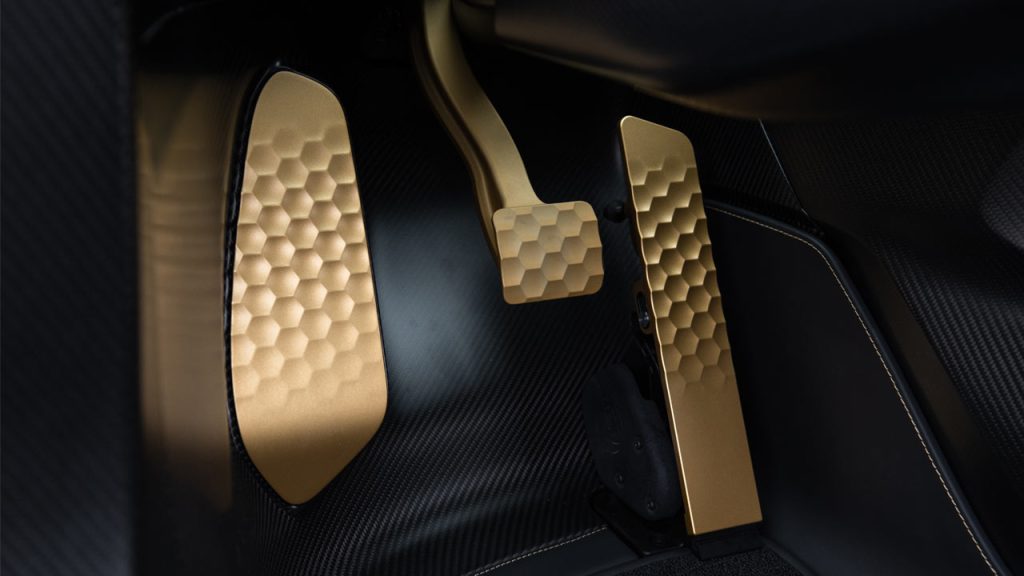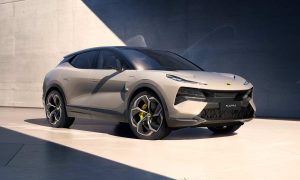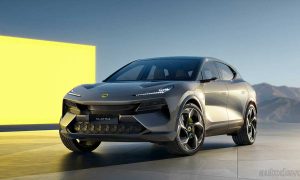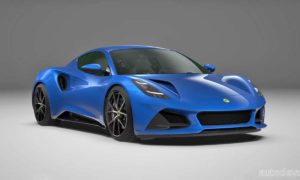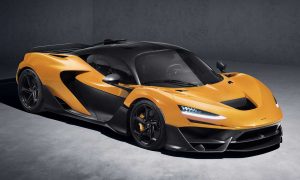Lotus has revealed a special edition of its all-electric Evija hypercar called the Evija Fittipaldi—which as the name suggests, pays homage to former Brazilian racing driver Emerson Fittipaldi who made his race debut with Team Lotus back in the ’70s. The special edition also celebrates 50 years since Fittipaldi and Team Lotus won F1 Drivers’ and Constructors’ Championships. Lotus is building only 8 units in total, all are pre-sold, of course. Deliveries are commencing in early 2023.
The Evija Fittipaldi sports a black and gold color theme of the Lotus Type 72 race car. Gold pinstripes outline the shapes of the car, while there’s a rather large Emerson Fittipaldi name in Gold on the rear buttress. Near the name, you’ll also see the number ‘8’, which was Fittipaldi’s number on his car during the 1972 season. On the active rear wing, you’ll see decals that celebrate the Type 72’s race victories from the 1972 season.
Of course, the wheels are also part of the celebrations with a black and gold theme with anodized centre lock surrounds. The wheels hide black and gold calipers. A carbon and gold Lotus nose badge rounds off the exterior styling.
On the inside too, the contrast gold accents have been carried over where you’ll find them on the air vents, steering, pedals, seats, roofliner.. and pretty much wherever possible. The dashboard features Fittipaldi’s hand-stitched signature, while the roofliner features the Type 72 icon. But most importantly, that rotary dial on the floating centre console is apparently hand-crafted from recycled original Type 72 aluminium.
Does Evija Fittipaldi gets more horses or is it all about visual drama? Well, I’m glad you asked. The “regular” Evija which debuted over 3 years ago, claimed combined figures of 1,471 kW (2,000 metric hp) and 1,700 Nm (1,254 lb-ft) from its four motors. Now these figures are updated, which are 1,500 kW (2,039 metric hp) and 1,704 Nm (1,257 lb-ft). The official 0-100 km/h (0-62 mph) sprint time is estimated to be under 3 seconds while the top speed is electronically limited to 350 km/h (217 mph). The target weight is now 1,887 kg (4,160 lbs), a significant increase from the original target of 1,680 kg (3,704 lbs).

Leave a Reply
Note: Comments that are unrelated to the post above get automatically filtered into the trash bin.
